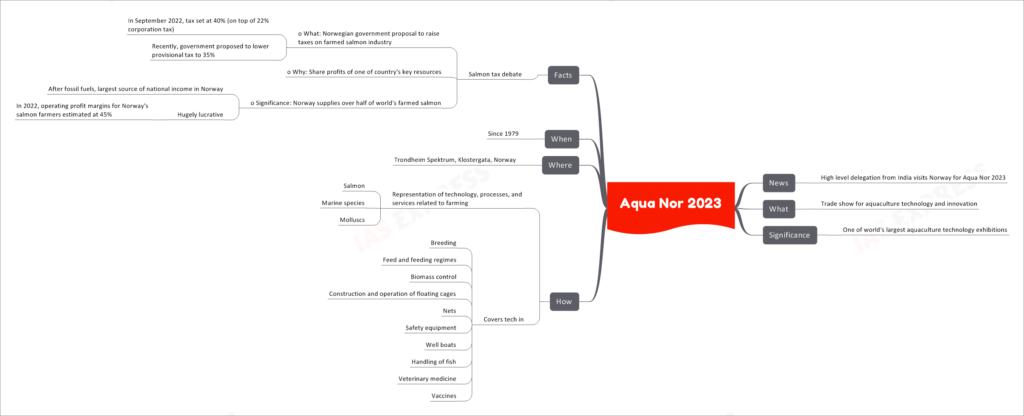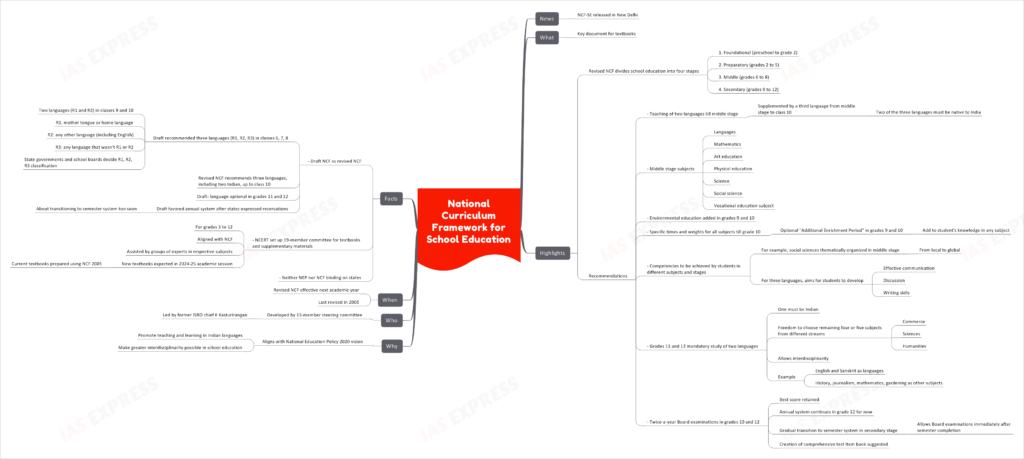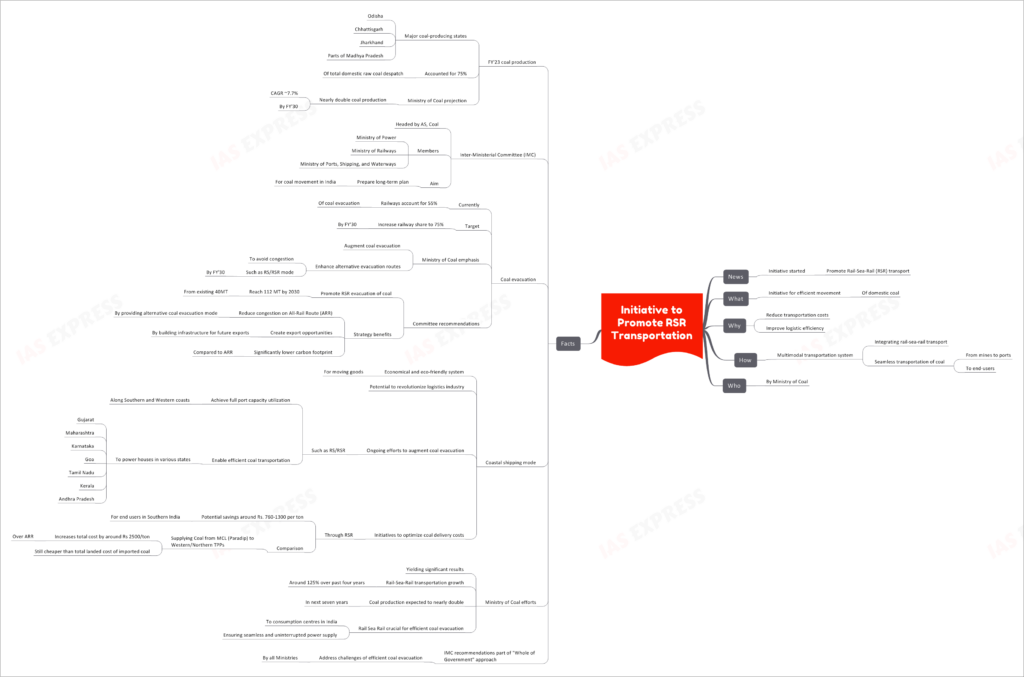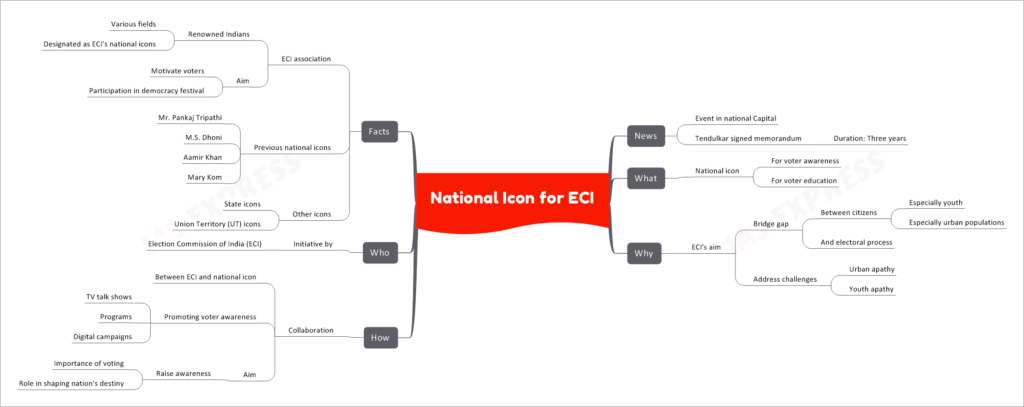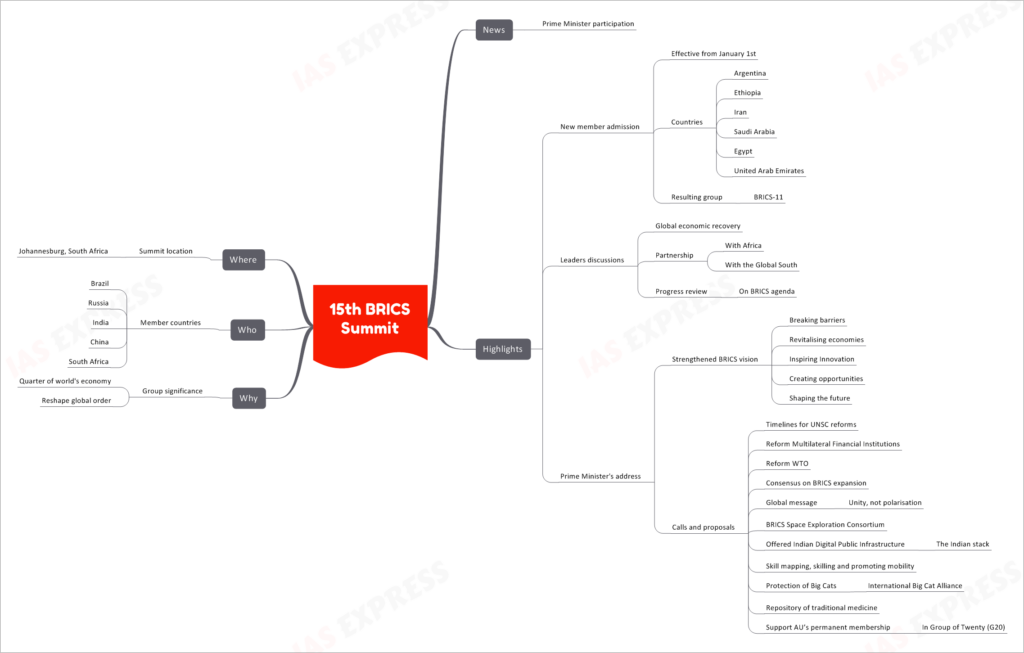[Newsbits] 23.08.2023

Khadi Rakshasoot
In a heartwarming and eco-conscious initiative, the launch of Khadi Rakshasoot in New Delhi has captured attention as a 'Pilot Project.' This unique endeavor has brought forth the creation of Khadi-Rakhi, crafted by skilled spinner sisters residing in rural India, fostering the spirit of Raksha Bandhan with a touch of sustainable artistry.
News: Launching Khadi Rakshasoot
The launch of Khadi Rakshasoot in New Delhi has sparked interest, marking the initiation of a 'Pilot Project' that carries meaningful implications for both Raksha Bandhan celebrations and sustainable empowerment.
Defining Khadi Rakshasoot
Khadi-Rakhi with a Sustainable Twist
Khadi Rakshasoot is a distinctive endeavor that involves the creation of Khadi-Rakhi by dedicated and skilled spinner sisters hailing from rural corners of India. These intricately crafted Rakhis carry not just the sentiment of the festival but also a touch of sustainability.
Key Features
The Khadi Rakshasoot Rakhis are characterized by several notable features:
- Diverse price range, spanning from Rs.20 to Rs.250 each.
- Incorporation of natural elements such as basil, tomato, and brinjal seeds, along with the sacred cow dung, to enhance the Rakhi's composition.
The Purpose Behind Khadi Rakshasoot
Commemorating Raksha Bandhan and Empowering 'Atmanirbhar Bharat'
The initiative is rooted in the twin goals of commemorating the festival of Raksha Bandhan and fostering the 'Atmanirbhar Bharat' (Self-Reliant India) ethos.
The Advantages of Khadi Rakshasoot
Embracing Naturality and Sustainability
One of the notable strengths of Khadi Rakshasoot lies in its commitment to entirely natural craftsmanship, free from the intrusion of chemical additives.
Key Contributors and Initiators
Khadi and Village Industries Commission (KVIC)
The Khadi Rakshasoot initiative is spearheaded by the Khadi and Village Industries Commission, operating under the aegis of the Ministry of Micro, Small and Medium Enterprises.
Aqua Nor 2023
A significant delegation from India has recently visited Norway to participate in Aqua Nor 2023, a renowned trade show that spotlights advancements in aquaculture technology and innovation. This exhibition has earned its reputation as one of the world's largest platforms for showcasing cutting-edge developments in the aquaculture industry.
News: Indian Delegation at Aqua Nor 2023
The news revolves around a high-level delegation from India, which has traveled to Norway to partake in Aqua Nor 2023, underscoring the global significance of this event.
Defining Aqua Nor 2023
Promoting Aquaculture Technology and Innovation
Aqua Nor 2023 serves as a vital trade show dedicated to the display and exploration of aquaculture technology and innovative solutions.
The Significance of Aqua Nor
A Premier Aquaculture Technology Exhibition
Aqua Nor holds distinction as one of the world's foremost exhibitions spotlighting technological advancements in the field of aquaculture.
Exploring Aqua Nor's Offerings
Range of Representation
Aqua Nor 2023 brings together a comprehensive representation of technology, processes, and services associated with aquaculture, particularly in the domains of:
- Salmon farming
- Marine species cultivation
- Mollusc cultivation
Encompassing Aquaculture Technology
The event encompasses a diverse spectrum of aquaculture technologies, including those related to:
- Breeding techniques
- Feed and feeding regimes
- Biomass control
- Construction and operation of floating cages
- Nets
- Safety equipment
- Well boats
- Fish handling methodologies
- Veterinary medicine
- Vaccines
Event Details
Venue
The Aqua Nor 2023 event is being held at Trondheim Spektrum, Klostergata, Norway.
Historical Context
The inception of Aqua Nor dates back to 1979, marking a long-standing tradition of showcasing aquaculture advancements.
Additional Insights: Norwegian Salmon Tax Debate
The Context
An ongoing point of discussion in Norway is the salmon tax debate, which involves proposed tax adjustments on the farmed salmon industry.
Tax Proposal Details
The Norwegian government initially proposed raising taxes on the farmed salmon industry, setting the tax rate at 40% in September 2022, in addition to the existing 22% corporation tax. However, there has been a recent proposal to reduce the provisional tax rate to 35%.
Rationale for Tax Changes
The intention behind the proposed salmon tax changes is to equitably distribute the profits generated from one of Norway's significant resources.
Global Significance of Norwegian Salmon
Norway holds a dominant position in the global farmed salmon industry, contributing to over half of the world's supply. This industry is a substantial source of national income for the country, second only to fossil fuels.
Economic Implications
The salmon farming industry in Norway is highly lucrative, with operating profit margins estimated at an impressive 45% for the country's salmon farmers in 2022.
National Curriculum Framework for School Education
In a significant stride towards transforming the educational landscape, the revised National Curriculum Framework for School Education (NCF-SE) has been released in New Delhi. This crucial document holds the key to revamping textbooks and fundamentally altering the learning experience in schools across India.
News: NCF-SE Release
The unveiling of the National Curriculum Framework for School Education (NCF-SE) in New Delhi marks a pivotal moment in shaping the future of education.
Defining the NCF-SE
Guiding Document for Textbooks
The NCF-SE assumes the role of a guiding framework that will steer the creation of textbooks and curricula across schools.
Key Highlights of the Revised NCF-SE
Revised Framework's Structure
The revised NCF divides school education into four distinct stages, each catering to specific developmental phases:
- Foundational (preschool to grade 2)
- Preparatory (grades 2 to 5)
- Middle (grades 6 to 8)
- Secondary (grades 9 to 12)
Recommendations for Teaching and Subjects
The framework encompasses a range of recommendations:
- Teaching of two languages till the middle stage, supplemented by a third language from middle stage to class 10. Of these languages, at least two must be native to India.
- Middle stage subjects encompass languages, mathematics, art education, physical education, science, social science, and a vocational education subject.
- Addition of environmental education in grades 9 and 10.
- Specification of time allocations and weights for all subjects until grade 10, with the inclusion of an optional "Additional Enrichment Period" in grades 9 and 10 to foster extended learning.
- Emphasis on achieving specific competencies in different subjects and stages. For instance, social sciences will follow a thematic organization from local to global.
- Mandating the study of two languages in grades 11 and 12, one of which must be Indian. Students have the freedom to choose additional subjects from diverse streams, fostering interdisciplinarity.
Assessment and Examination
The NCF-SE introduces twice-a-year Board examinations in grades 10 and 12, allowing students to retain their best scores. It proposes a gradual transition to a semester system in the secondary stage, enabling Board examinations right after the completion of each semester. Moreover, the creation of a comprehensive test item bank is recommended.
Alignment with Vision and Purpose
Harmonizing with NEP 2020
The revised NCF-SE aligns seamlessly with the vision set forth by the National Education Policy 2020 (NEP), emphasizing the promotion of teaching and learning in Indian languages and fostering greater interdisciplinarity in school education.
Key Contributors and Timeline
Developed by Steering Committee
The NCF-SE was formulated by a 13-member steering committee, led by former ISRO chief K Kasturirangan.
Effective Implementation and Last Revision
The revised NCF-SE is set to take effect from the next academic year, bringing about transformative changes. The previous version was last revised in 2005.
Additional Facts and Comparative Insights
Draft NCF vs. Revised NCF
Comparatively, the draft NCF recommended the teaching of three languages up to grade 10. In contrast, the revised NCF endorses three languages, including two Indian languages, until grade 10.
NCERT's Role and Future
The NCERT has established a 19-member committee for creating textbooks and supplementary materials aligned with the NCF-SE. These new textbooks are anticipated to be introduced in the academic session of 2024-25.
Flexibility for States
Neither the NEP nor the NCF is binding on states, allowing flexibility in their adoption and implementation.
Initiative to Promote RSR Transportation
A groundbreaking initiative is underway to enhance the efficiency of coal transportation through a novel approach called Rail-Sea-Rail (RSR). This initiative, driven by the Ministry of Coal, aims to optimize domestic coal movement, reducing costs and bolstering logistics efficiency.
News: RSR Initiative Launch
The news heralds the commencement of the Rail-Sea-Rail (RSR) initiative, dedicated to promoting the seamless transportation of domestic coal using a multimodal approach.
The Objective of the Initiative
Efficient Domestic Coal Movement
At its core, the RSR initiative seeks to establish a sophisticated system for the efficient movement of domestic coal, thereby enhancing economic viability and logistics efficiency.
Why RSR Matters
Cost Reduction and Logistic Efficiency
The primary goal behind the RSR initiative is to mitigate transportation costs while concurrently boosting the overall efficiency of logistics operations related to coal movement.
How RSR Works
Multimodal Transportation System
The RSR initiative operates through a multimodal transportation approach. It ingeniously integrates rail-sea-rail transport to ensure seamless movement of coal from mines to ports and eventually to end-users.
Ministry of Coal's Endeavor
The initiative has been pioneered by the Ministry of Coal, aiming to not only streamline the coal transportation process but also to make it more eco-friendly and economically viable.
Facts and Figures
Coal Production in FY'23
The major coal-producing states like Odisha, Chhattisgarh, Jharkhand, and parts of Madhya Pradesh accounted for a whopping 75% of the total domestic raw coal despatch during the fiscal year 2022-23.
Inter-Ministerial Committee (IMC)
An Inter-Ministerial Committee, headed by the Additional Secretary of Coal, and comprising members from the Ministries of Power, Railways, and Ports, Shipping, and Waterways, aims to chart out a comprehensive long-term plan for coal movement in India.
Coal Evacuation Target
The Ministry of Coal's vision is to increase the railway's share in coal evacuation to 75% by the fiscal year 2030, up from the existing 55%.
Coastal Shipping Mode Potential
The coastal shipping mode, seen as an economical and environmentally friendly system for goods movement, holds immense potential to transform the logistics industry.
Benefits and Savings through RSR
The RSR strategy promises significant benefits, including the reduction of congestion on the All-Rail Route (ARR), potential export opportunities, and noteworthy carbon footprint reduction when compared to the ARR.
Ministry of Coal's Successes
The Ministry's ongoing efforts are reaping rewards, with RSR transportation growing by around 125% over the last four years. This initiative is crucial to ensuring seamless and uninterrupted power supply across consumption centers in India.
National Icon for ECI
News: Tendulkar's Endorsement
In a momentous occasion, Sachin Tendulkar, a revered figure in Indian cricket, signed a memorandum with the ECI. This agreement spans a three-year duration and sets the stage for collaborative efforts in enhancing voter awareness and education.
The Role of the National Icon
Promoting Voter Awareness and Education
Sachin Tendulkar's designation as the national icon holds a dual purpose: to amplify voter awareness and bolster voter education. By leveraging his stature and influence, Tendulkar is set to engage citizens, particularly the youth and urban populations, in the electoral process.
ECI's Aim and the Necessity for a National Icon
Bridging the Gap
The ECI's overarching aim in appointing a national icon is to bridge the gap that exists between citizens and the electoral process. This is particularly crucial for the youth and urban communities, who sometimes feel disconnected from the democratic proceedings.
Addressing Challenges
The appointment of a national icon also addresses challenges such as urban apathy and youth disinterest in voting. By associating with a prominent figure like Tendulkar, the ECI aims to rekindle enthusiasm and active participation in the democratic process.
The Collaborative Approach
Collaboration Between ECI and National Icon
The success of this initiative hinges on the collaboration between the ECI and the national icon, Sachin Tendulkar. Together, they are set to drive comprehensive efforts to make voting an integral part of citizens' lives.
Promoting Voter Awareness through Multi-channel Strategy
This multifaceted approach involves the strategic use of various platforms. These include TV talk shows, dedicated programs, and impactful digital campaigns. Collectively, these avenues aim to cultivate a deeper understanding of the importance of voting and its pivotal role in shaping the destiny of the nation.
Aim: Elevating Awareness
At the core of these initiatives lies the intention to elevate citizens' awareness about the significance of their votes. By fostering a sense of responsibility and active participation, the ECI and Tendulkar aspire to witness increased voter turnout in future elections.
The Driving Force: ECI's Initiative
Initiative Led by Election Commission of India (ECI)
This pioneering initiative is championed by the Election Commission of India, reflecting their commitment to nurturing the democratic process and involving citizens in nation-building.
Facts: ECI's Association with Renowned Figures
The ECI has consistently partnered with distinguished individuals from various fields, designating them as national icons. This practice is rooted in the aim of motivating voters and encouraging their active participation in the grand festival of democracy.
Previous National Icons
Among the illustrious list of previous national icons are luminaries like Mr. Pankaj Tripathi, M.S. Dhoni, Aamir Khan, and Mary Kom. These icons have played instrumental roles in inspiring citizens to exercise their fundamental right to vote.
Beyond the National Realm: State and UT Icons
This initiative extends beyond the national level, encompassing state and union territory (UT) icons as well. These designated figures contribute significantly to promoting voter awareness and education within their respective regions.
15th BRICS Summit
In recent news, the 15th BRICS Summit has captured international attention, as leaders from five major emerging economies came together to discuss pivotal global issues. The participation of the Prime Minister and the inclusion of new member countries marked significant milestones in the summit's history.
Prime Minister's Participation
The Prime Minister's active engagement in the 15th BRICS Summit underscored the importance of collaborative efforts among emerging economies. This participation not only highlights the nation's commitment to global partnerships but also emphasizes its proactive role in shaping the future.
Highlights
New Member Admission
The summit saw the admittance of new member countries into the BRICS alliance, a development set to take effect from January 1st. This expansion adds fresh perspectives and diversity to the group, enhancing its ability to address a wider array of global challenges.
- Countries: Argentina, Ethiopia, Iran, Saudi Arabia, Egypt, United Arab Emirates
- Resulting Group: BRICS-11
Leaders' Discussions
The discussions among BRICS leaders covered a range of crucial topics with far-reaching implications.
- Global Economic Recovery: Addressing the ongoing aftermath of the pandemic, leaders deliberated strategies for sustainable global economic recovery.
- Partnership: Strengthening ties with Africa and the Global South emerged as a central theme, demonstrating BRICS' commitment to inclusive and equitable growth.
- Progress Review: A comprehensive review of progress on the BRICS agenda showcased the group's dedication to achieving mutual objectives.
Prime Minister's Address
The Prime Minister's address was a standout moment during the summit, as it highlighted key pillars for a fortified BRICS vision.
- Strengthened BRICS Vision: The Prime Minister outlined a vision centered around breaking barriers, revitalizing economies, inspiring innovation, creating opportunities, and shaping a prosperous future.
- Calls and Proposals: Various significant calls and proposals were made by the Prime Minister, including advocating for timelines for UNSC reforms, reforming Multilateral Financial Institutions, and overhauling the WTO for fair global trade practices.
- Consensus on BRICS Expansion: The Prime Minister emphasized the need for a consensus on BRICS' expansion to amplify the group's influence.
- Global Message: Unity over polarisation emerged as a global message, fostering international cooperation.
BRICS Space Exploration Consortium
A groundbreaking initiative, the BRICS Space Exploration Consortium, was introduced, underlining the member countries' shared aspirations in space exploration.
Offered Indian Digital Public Infrastructure
The Prime Minister extended an offer of India's advanced Digital Public Infrastructure, known as the "Indian stack," to facilitate digital collaboration and development among member nations.
Skill Mapping, Skilling, and Promoting Mobility
Efforts in skill mapping, skilling, and promoting mobility were emphasized, showcasing a commitment to human resource development and global talent exchange.
Protection of Big Cats
The establishment of an International Big Cat Alliance showcased environmental consciousness and collaborative efforts in biodiversity conservation.
Repository of Traditional Medicine
A repository of traditional medicine was proposed, promoting cross-cultural exchange and knowledge-sharing in healthcare practices.
Support AU’s Permanent Membership in G20
Backing the African Union's permanent membership in the Group of Twenty (G20) demonstrated solidarity with the Global South.
Why BRICS Matters
Group Significance
The BRICS alliance holds immense significance as it collectively represents a quarter of the world's economy. By collaborating, these emerging economies can reshape the global order, promoting a more balanced and inclusive international landscape.
Who Are the BRICS Members
Member Countries
The BRICS group comprises five major emerging economies:
- Brazil
- Russia
- India
- China
- South Africa
Where the Summit Unfolded
Summit Location
The 15th BRICS Summit unfolded in Johannesburg, South Africa, providing a symbolic backdrop for discussions on global partnership and development.

